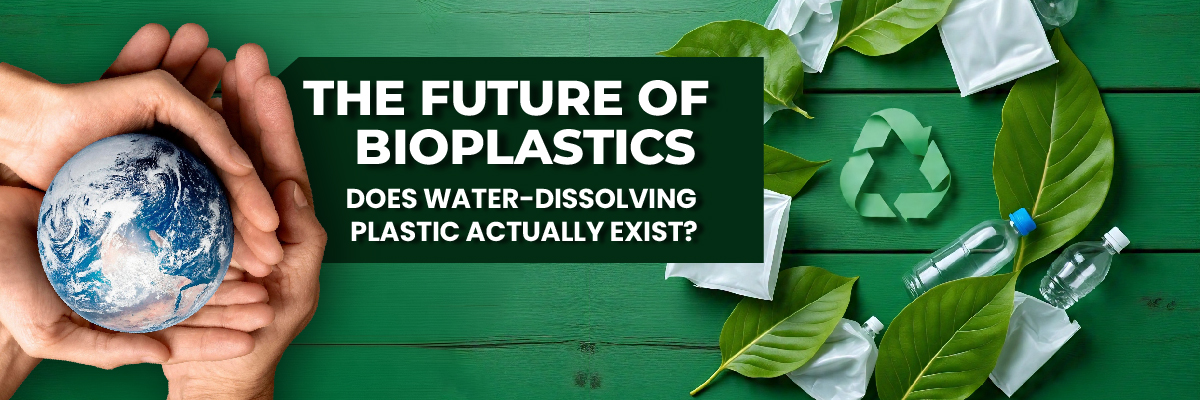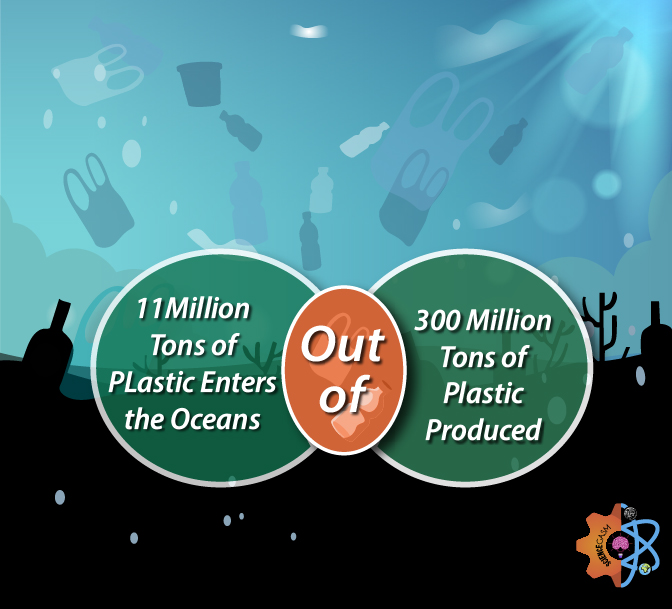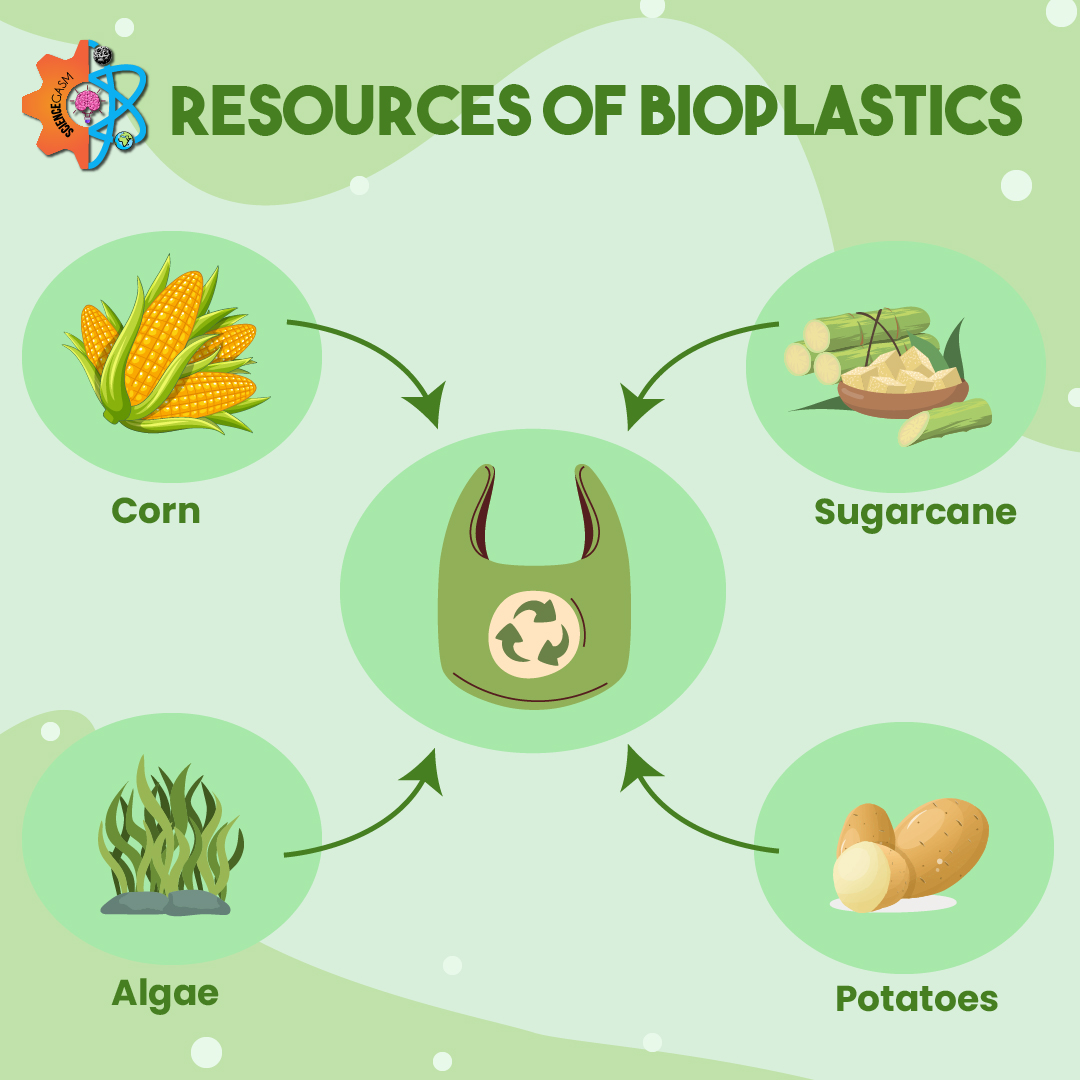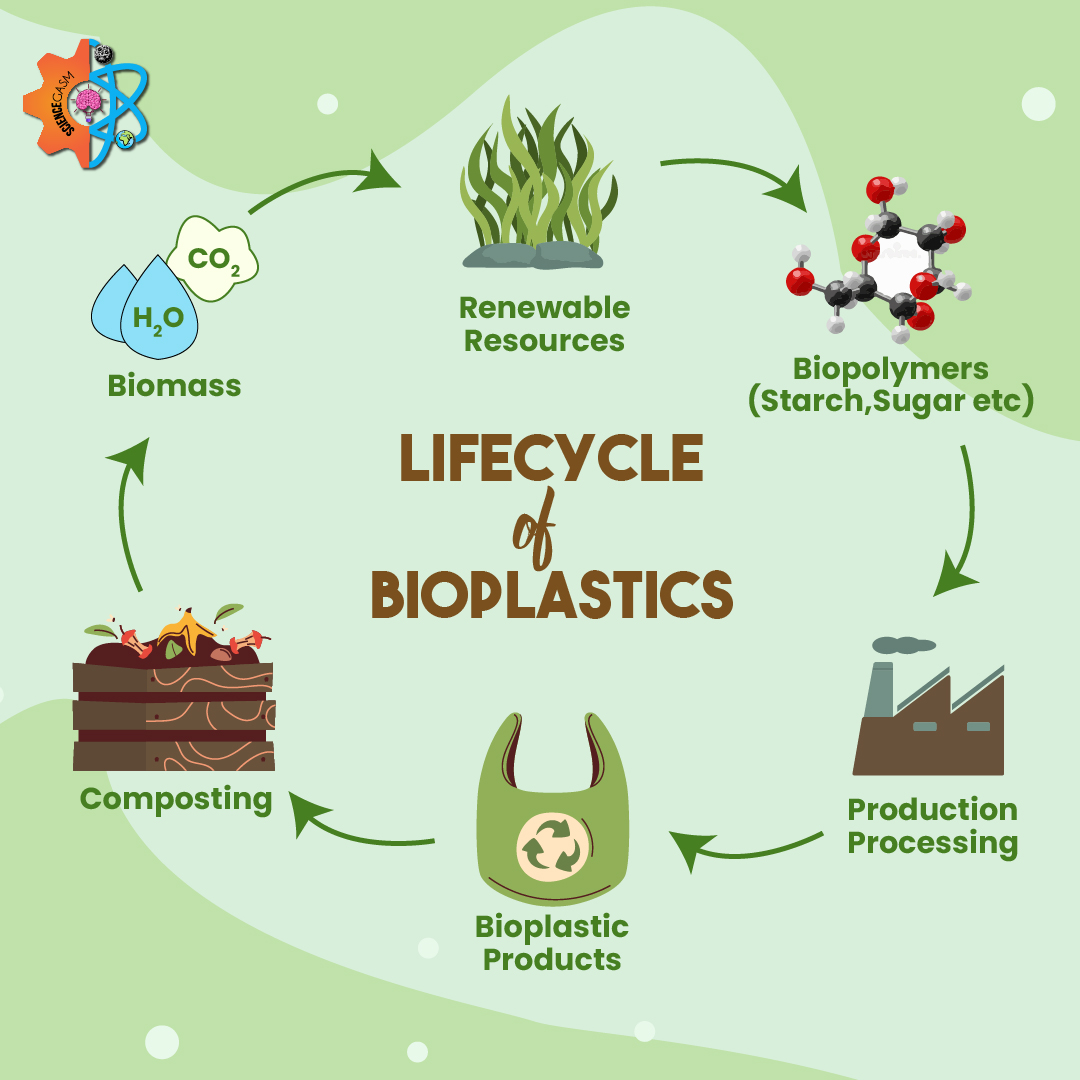What comes to your mind when we say the word Plastic? Something that is cheap, durable, or fake, right? Well, have a look around. Plastic is everywhere. From your clothes, your shoes, to that coffee cup in your hand. Everything is made out of plastic. But let’s face it. Besides being useful and convenient, it is also destroying our planet. It might sound crazy, but the plastic hat you wore to your birthday party last year might still be floating in an ocean or sitting in a landfill. And it could potentially stay there for like what, 400 years? 500 years? Forever? Maybe. Almost 11 million tons of Plastic enter the oceans every year, polluting both water and land. Shocking, right? Scientists are now striving to come up with something that is biodegradable, that breaks easily in the environment, and doesn’t stick around for an extended period. Let’s find out the future of bioplastics.

Plastic Waste Pollution
Plastic is one of the greatest inventions of today. It is cheap and extremely versatile, and is now being used in everything from packaging to medical supplies. But the question is, how something as useful as plastic could really be destroying our planet? Here’s the thing: plastic degrades at a very slow rate, taking years to completely disappear. But the real trouble begins when this plastic ends up in the rivers and oceans. It breaks down into several small fragments called microplastics, which leak harmful chemicals into the water and soil. This not only damages the environment but also harms the marine life. These fragments later show up in the bodies of fish and birds. According to a study, samples from the North Atlantic Sea Water contained 580,000 pieces of plastic/km2.
Plastic starts harming our environment long before it is even used. It is produced using non-renewable resources like fossil fuels that release a hefty amount of greenhouse gases. With an increasing production rate, the annual global plastic production is projected to reach 300 million tons.

What Are Bioplastics?
Behind this fancy term, Bioplastics, lies a very simple idea that could really help in saving our planet. It is an alternative to traditional plastics, made up from natural and renewable resources like algae-based plastics, potato peel plastic, corn starch plastic, and other organic matter based plastic, instead of fossil fuels. They are absolutely degradable, which means they break down easily without contaminating our planet. This is what makes bioplastics sustainable and eco-friendly.

From Biodegradable to Compostable – The ABCs of Bioplastics
Bioplastic isn’t a single material, but it comprises a whole family of plastics. They are usually manufactured using polylactic acids (PLAs) and polyhydroxyalkanoates (PHAs). These polymers are extracted from plants and bacteria through a process of fermentation. On the basis of production and degradation, bioplastics are classified into the following two types:
- Biodegradable Bioplastics:
Biodegradable doesn’t mean that the plastic magically melts away into nature. But it is a type of bioplastic that breaks down into harmless substances like water and biomass through the process of biodegradation that involves microbes like bacteria and fungi. Unlike conventional plastics, they decompose in just a few months or years.
- Compostable Bioplastics:
How do compostable plastics break down? Compostable plastics don’t just disappear, but once they go back to nature, they enrich our soil. This puts them a step above the biodegradable plastics. Under the right conditions, like heat, moisture, and microbes, they break down in just a few weeks or months.
Can Bioplastics Make Our Planet Greener?
The invention of bioplastics has taken the world by storm. Scientists are optimistic that this could lead to the elimination of pollutants and landfill accumulation, making our environment safer and healthier. While conventional plastics consume 4% of world oil in production, bioplastics come from renewable resources like plants (plant-based plastics) and break down faster than petro-based plastics, having a lower carbon footprint and releasing fewer toxins. Some bioplastics are compostable, meaning when they break down, they return to the soil as nutrient, improving its fertility to grow more plants. Hence, it is clear that bioplastics are working in more than one way to keep our planet safe.

Are Bioplastics Completely Reliable?
Bioplastics help us in improve our environment and preserve nature. It is all rainbows and sunshine until we throw a light on the string of challenges it tags along. We need to understand that not all bioplastics are biodegradable. Some are just bio-based. They are created using the renewable resources, but they might take a longer time to decompose, just like regular plastics. Even the compostable plastics require specific industrial composting to break down. Which means that just tossing them away in your trash cans is not enough. On top of everything, the cost of bioplastics vs regular plastic is much higher. Hence, depending on bioplastics alone may not be the solution to our problem.
Plastic That Can Metabolize in Water
Does water dissolving plastic really exist? A recent study tells us that scientists at the RIKEN Center for Emergent Matter Science (CEMS) have created a plastic using supramolecular polymers that is capable of being metabolized in water. Yes, we are talking about plastic that degrades in oceans, creating a sustainable future. Surprisingly, this is stronger than our regular plastic. It is produced by mixing special monomers like sodium hexametaphosphate with either two or three guanidinium sulfate groups in water, forming a network that stays together until it is surrounded by electrolytes. On dissolving plastic in seawater, it degrades rapidly into a glass-like plastic that can be reshaped by heating, just like thermoplastics.
This new plastic will hopefully help in reducing the formation of microplastics that are toxic enough to destroy the whole ecosystem. Not only in water, but it degrades well in soil too, just in a matter of 10 days, releasing phosphorus and nitrogen that enrich the soil. The question that arises is that can bioplastics replace traditional plastics?
Correct Way of Disposing of Plastics
The improper disposal of plastics can cost us our lives. Imagine living with plastic inside your bodies. Wait, we already are! Somehow, from oceans and landfills, plastic has found its way into our bodies, damaging our hearts, lungs, and even placentas. Here are the steps to dispose of plastic waste correctly:
- Use bioplastics instead of regular ones
- Make recycling easier by separating plastic waste from non-recyclable trash
- Look for recycling symbols on plastic items
- Dispose of plastic in recycling bins
- Go sustainable by reusing and Reducing
Future of Bioplastics – Time to Play Your Part!
Isn’t it ironic that humans play a huge role in both protecting and harming the environment. We need to understand that we share an equal responsibility as government and industries in keeping our planet clean. And the best way of doing so is choosing the right sustainable alternatives to plastics. Talking of which, we can significantly improve our environment by reducing greenhouse gas emissions with bioplastics, preserving natural resources, and minimizing landfill accumulation. Growing 20-25% annually, the global bioplastic market growth is expected to reach $17.13 billion by the year 2027.
Hands down, it is one of the best inventions of all time. Moreover, people should know the correct way of disposing of plastics. Ways that would not lead to plastic waste in oceans and landfills. It is high time we put an end to the use of conventional plastic. Even just buying a potato bag is a step toward a better future.


